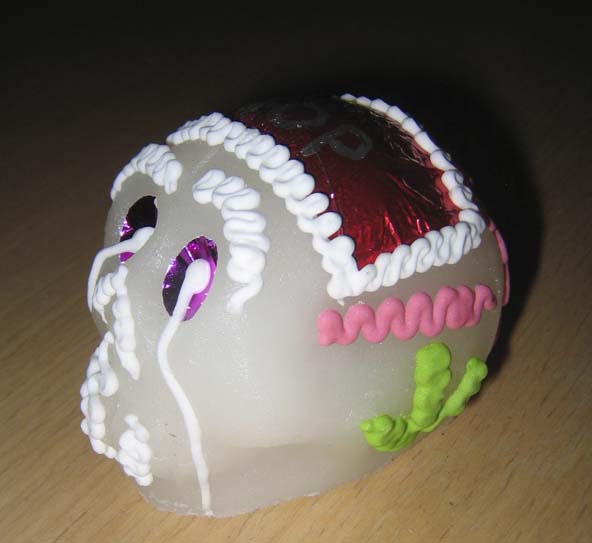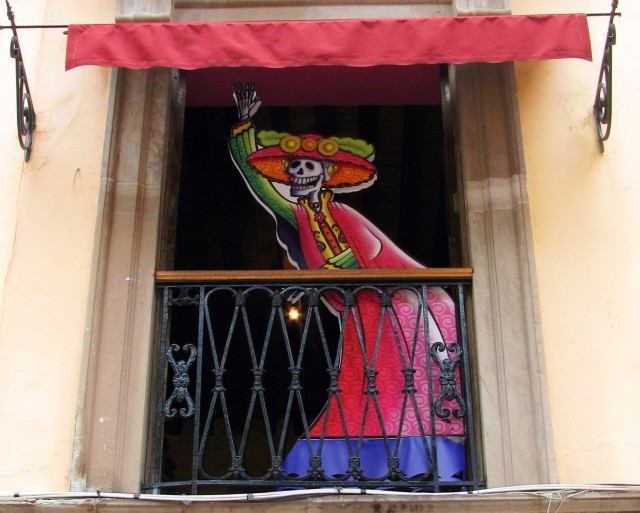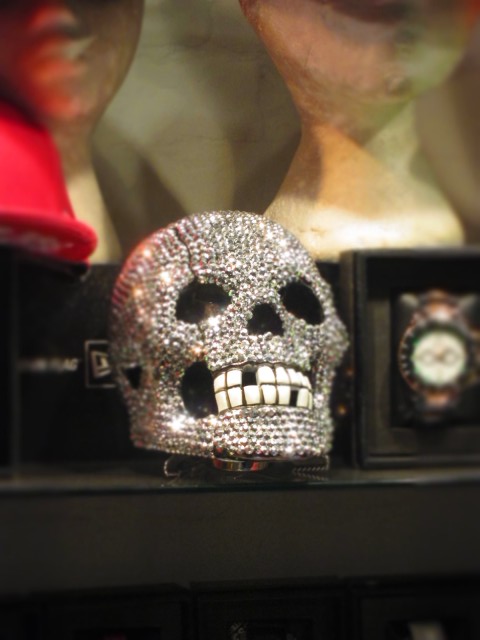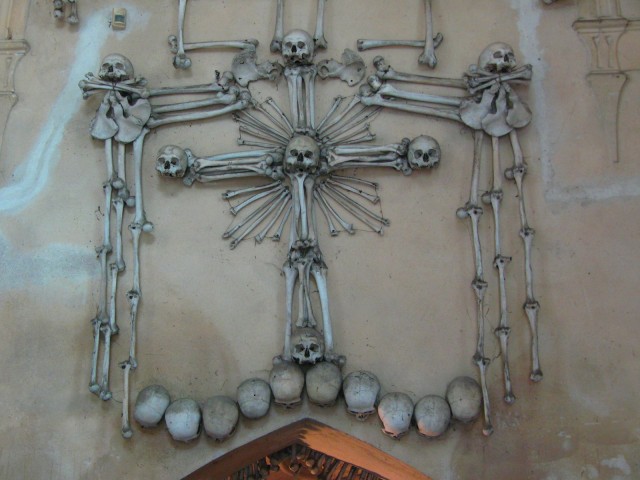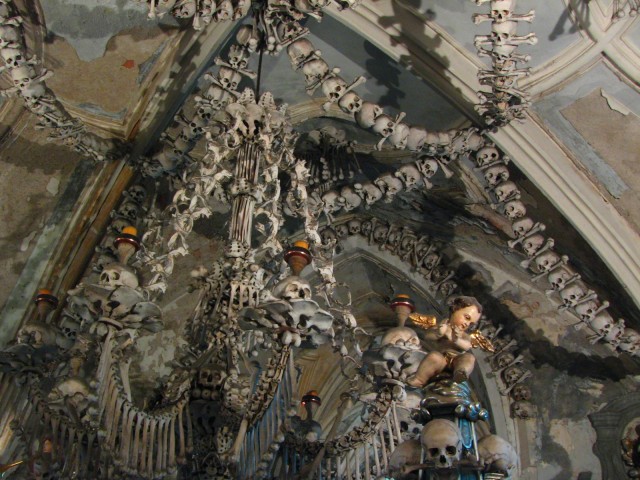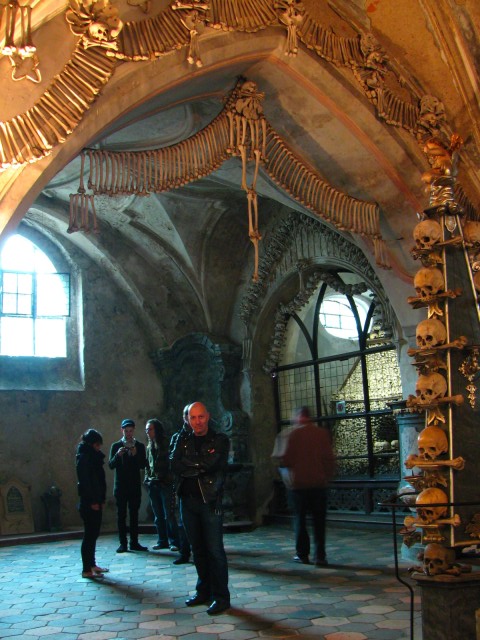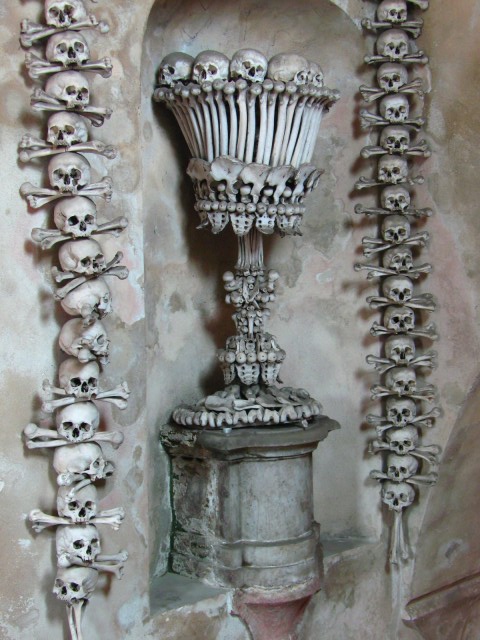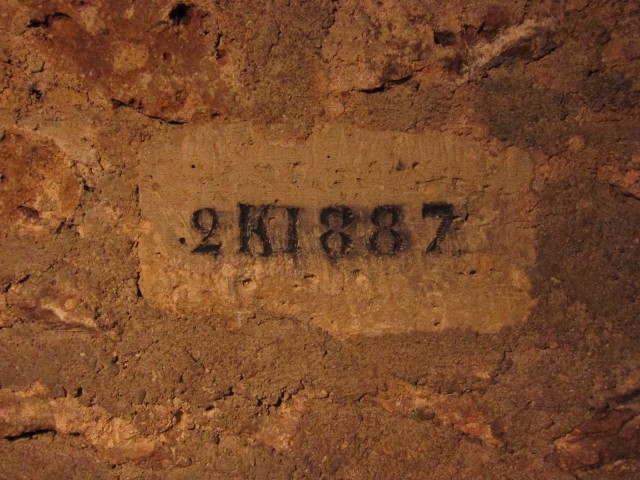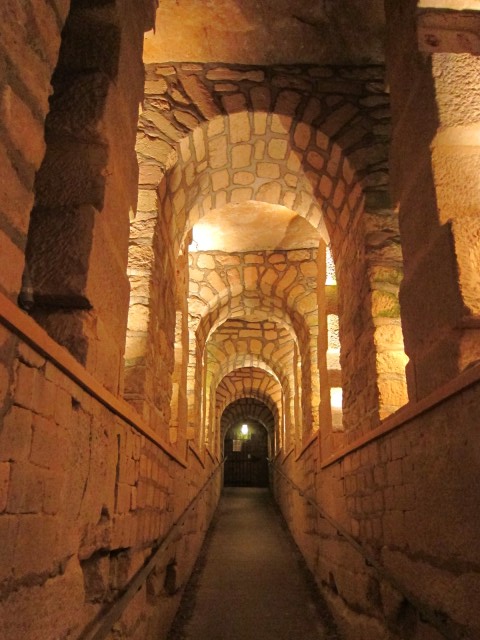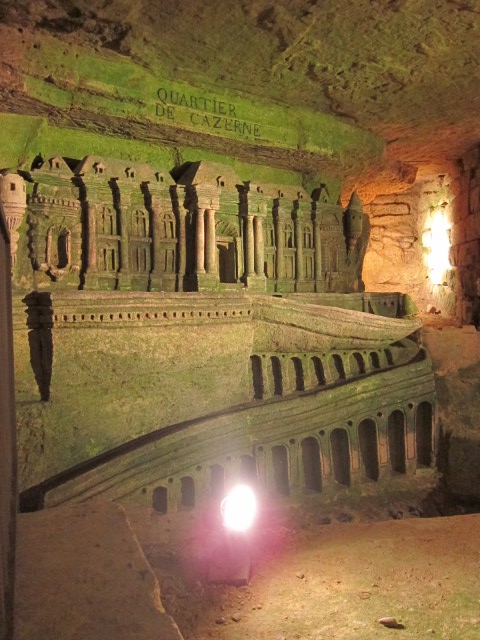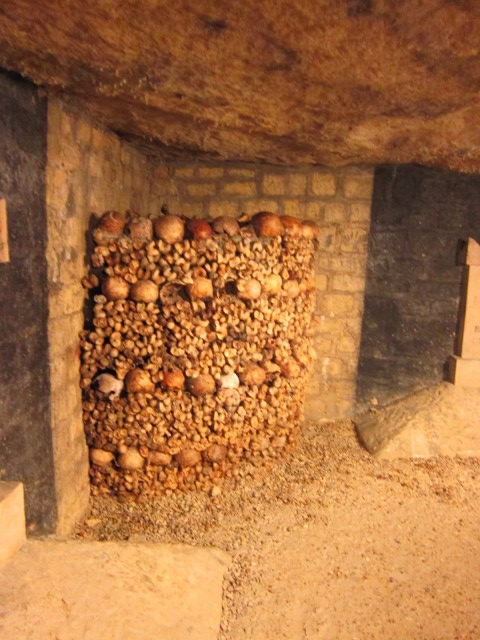Day of the Dead
Sedlec, Paris Catacombs
and Other Skeletons Not In The Closet
The 2nd day of November marks Day of the Dead in Mexico, or Día de Muertos. With its proximity to Halloween/All Saint's Day it evokes mixed reactions from people who aren't familiar with this custom. In México it's considered a fun holiday, a day of remembrance of the dead, a chance to spend time with the deceased loved ones and celebrate their lives. Did you know that people have a picnic at the cemetery, bringing the foods that the loved one enjoyed while alive, and throw a great party over their tombstone?
Mexico has a tradition of skulls and skeletons appearing in popular art and ancient rituals dating back to the time of the Aztecs. José Guadalupe Posada was a cartoonist whose social and political criticism documented the Mexican Revolution of 1910 by satirizing the rich and the politicians, and by depicting Mexican traditions and customs with poignant humor.
Skulls and skeletons often appear in modern art and crafts, and giving them and receiving them is a common practice in Mexico, where we poke fun at the gravitas of death, and face our own mortality with a smile in our faces. If you like someone, give him or her a skull!
Sedlec Ossuary, Czech Republic
The Sedlec Ossuary is a chapel in the Church of All Saints in the town of Kutná Hora. It's famous for displaying the skeletons of about 70,000 people, many of them arranged in artistic displays that furnish or decorate the chapel.
A woodcarver named Frantisek Rint was commissioned in 1870 to arrange the bone heaps in the ossuary. Frantisek was a crafty fellow, so he did the job with more diligence than anyone imagined and arranged the remains in various piles, then focused his attention on creating signs, chandeliers, and sculptures with many of the skeletons, creating fanciful displays of beautiful intricacy. He paid homage to the dead and gave them a purpose - a win-win for everyone involved!
Take a tour of the Sedlec Ossuary - many more photos here!
Paris Catacombs
The Paris catacombs started as limestone quarries, and were turned into a massive ossuary in the late 18th century, when the cemeteries within Paris city limits were running out of space to accommocate new guests, so the government decided to exhume the less wealthy buried in mass graves there and arrange the bones in the remains of the old quarries.
Miners burrowed through the ground, vertically and horizontally, claiming as much minerals as they could produce to satisfy the building boom above ground in Paris. The burrows open into several galleries, where the masons built elaborate maquettes or even a fancy vault. These burrows eventually became the passageway to the Municipal Ossuary, now known colloquially as The Catacombs.
In 1777, the Parisian Police Lieutenant General came up with the idea of using the tunnels of the former quarries as a municipal ossuary to accommodate the remains overflowing the city's cemeteries. While new cemeteries were slated to be built at Monmartre and Montparnasse, something had to be done with the 6 million or so bodies that needed a location of final rest. And so the catacombs came about.
From Wikipedia: Some of the arrangements are almost artistic in nature. Along the way one would find 'monuments' created in the years before catacomb renovations, such as a source-gathering fountain baptised "La Samaritaine" because of later-added engravings. There are also rusty gates blocking passages leading to other "unvisitable" parts of the catacombs.




